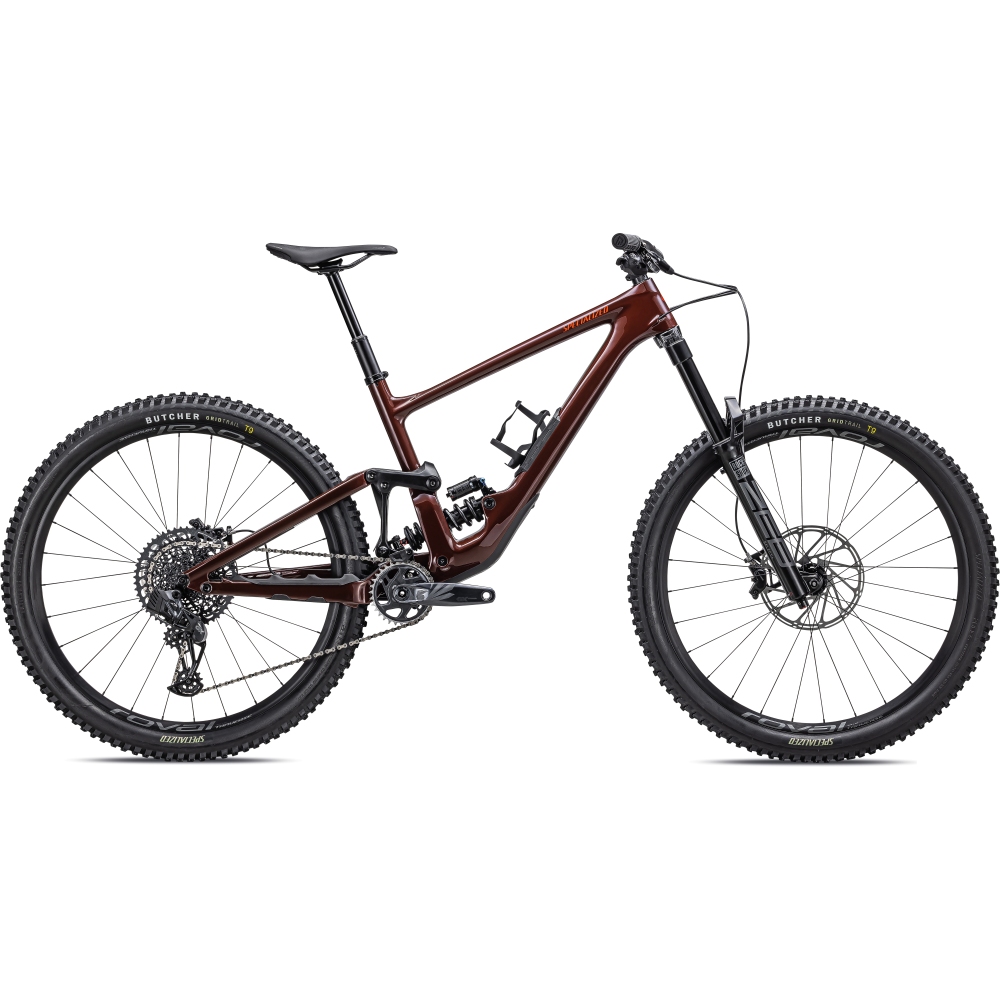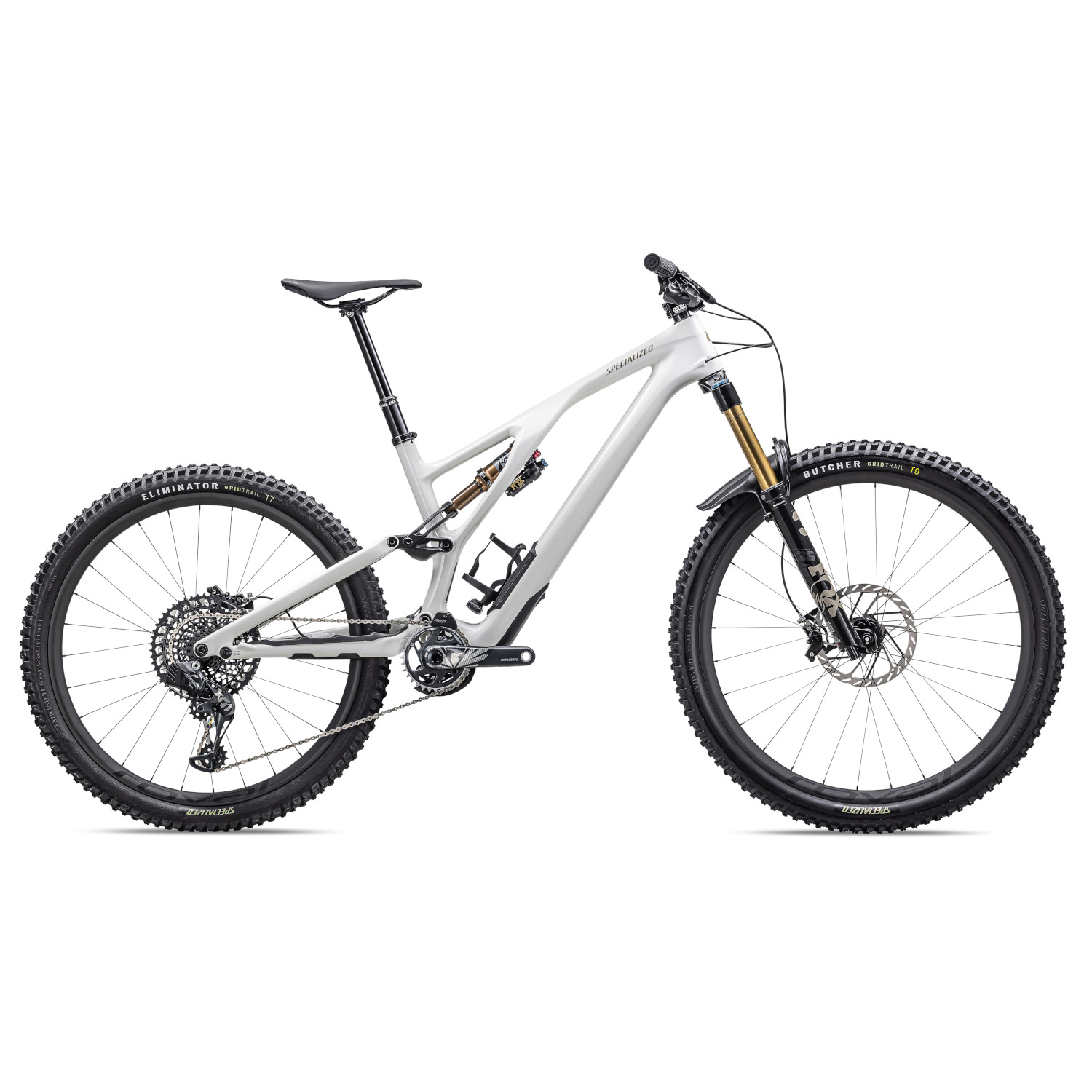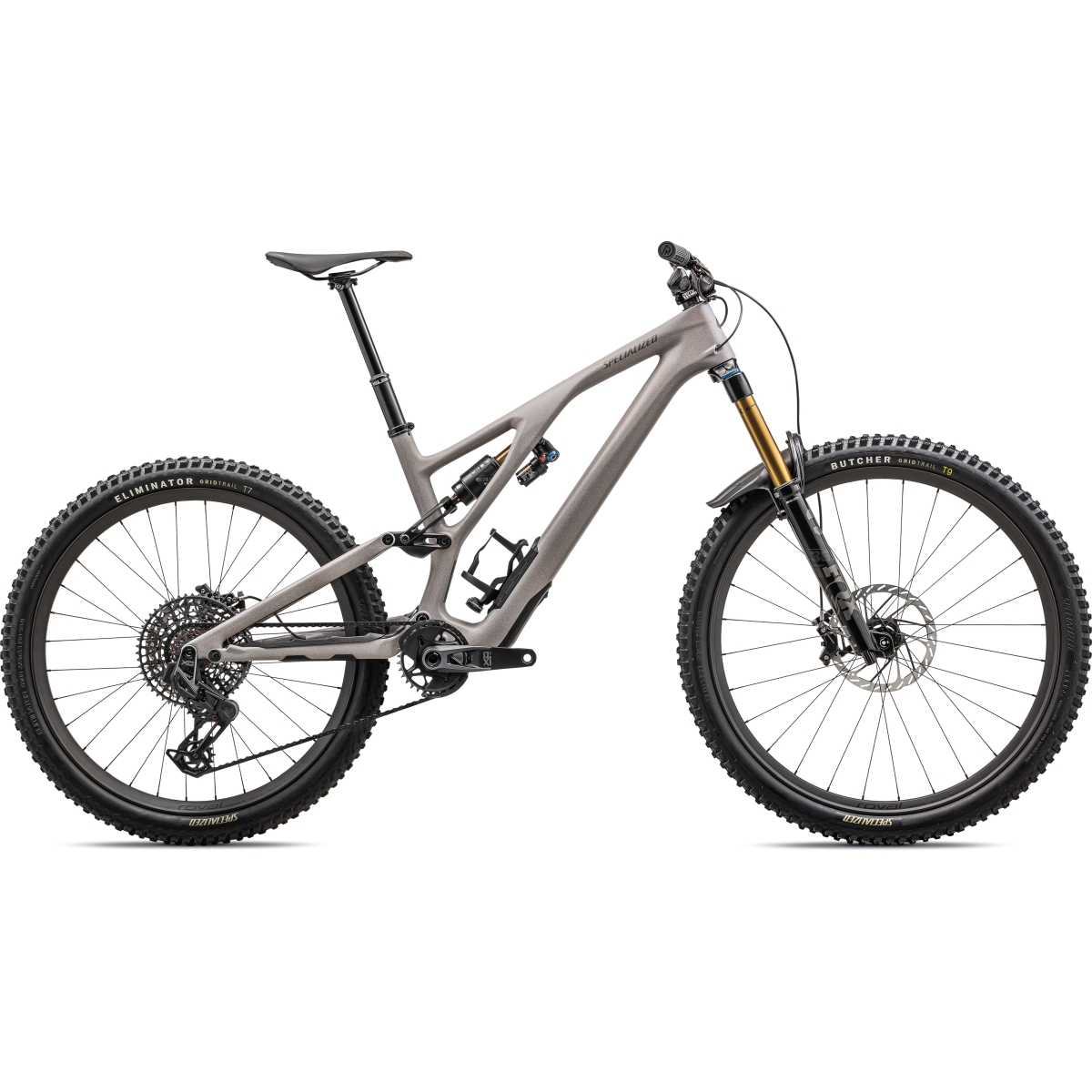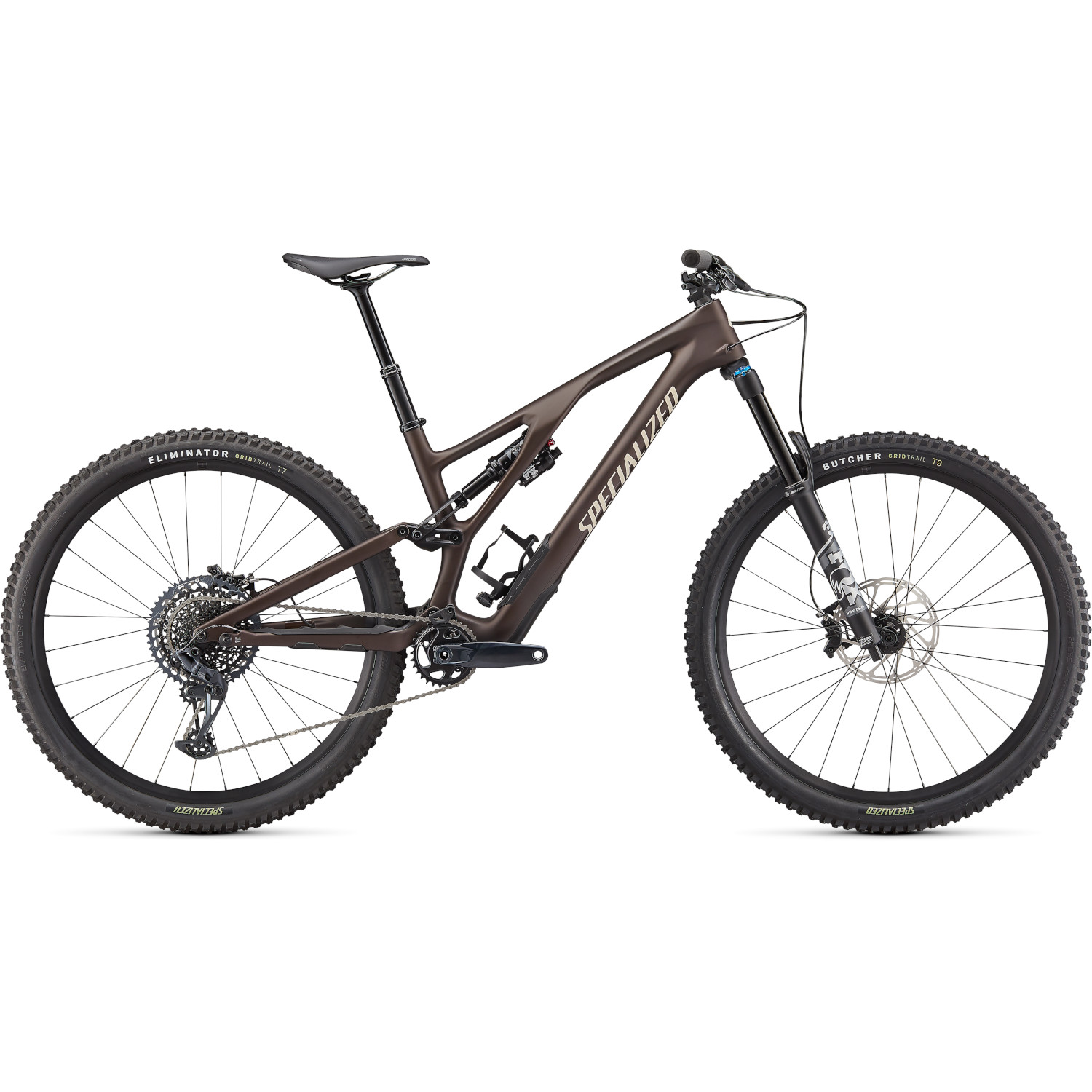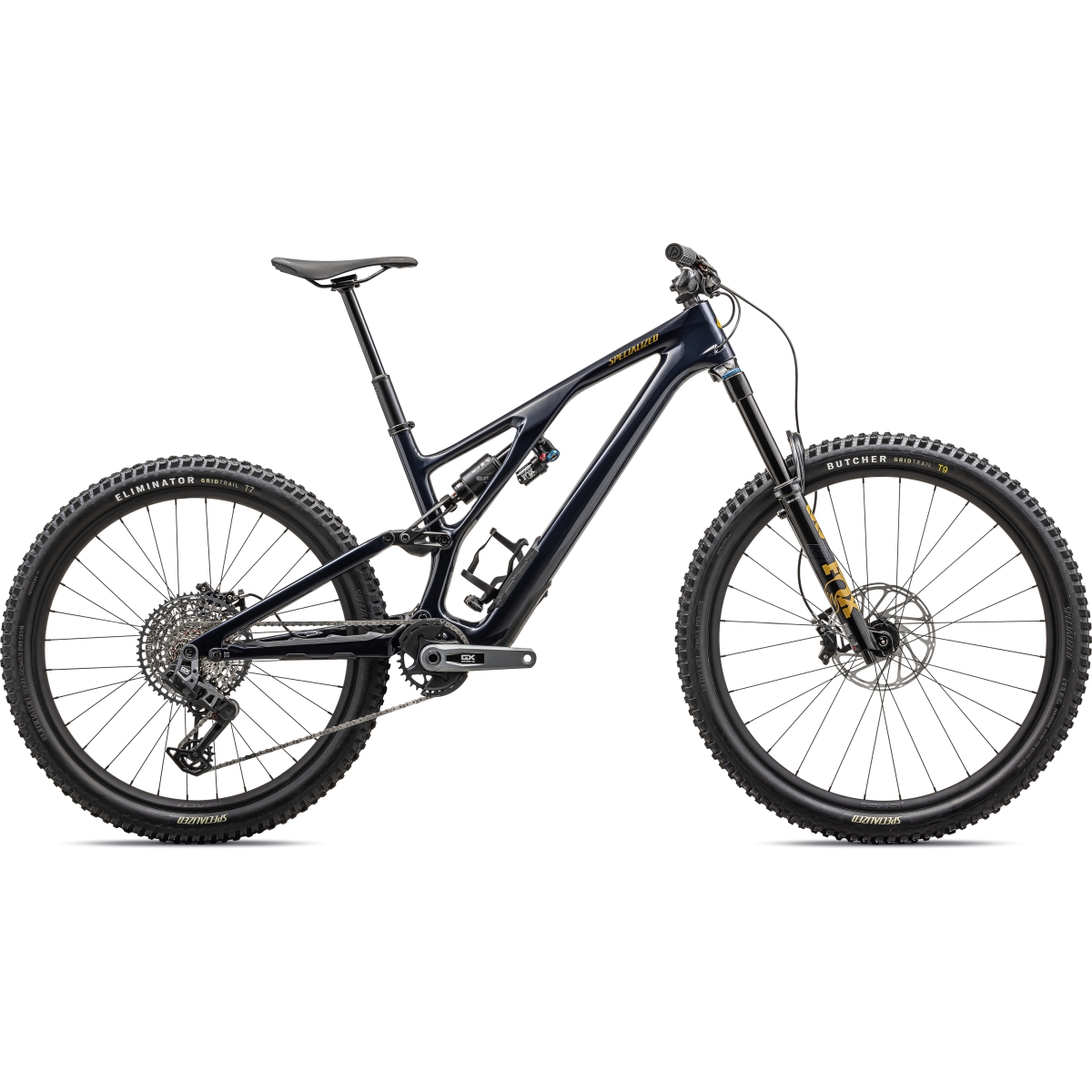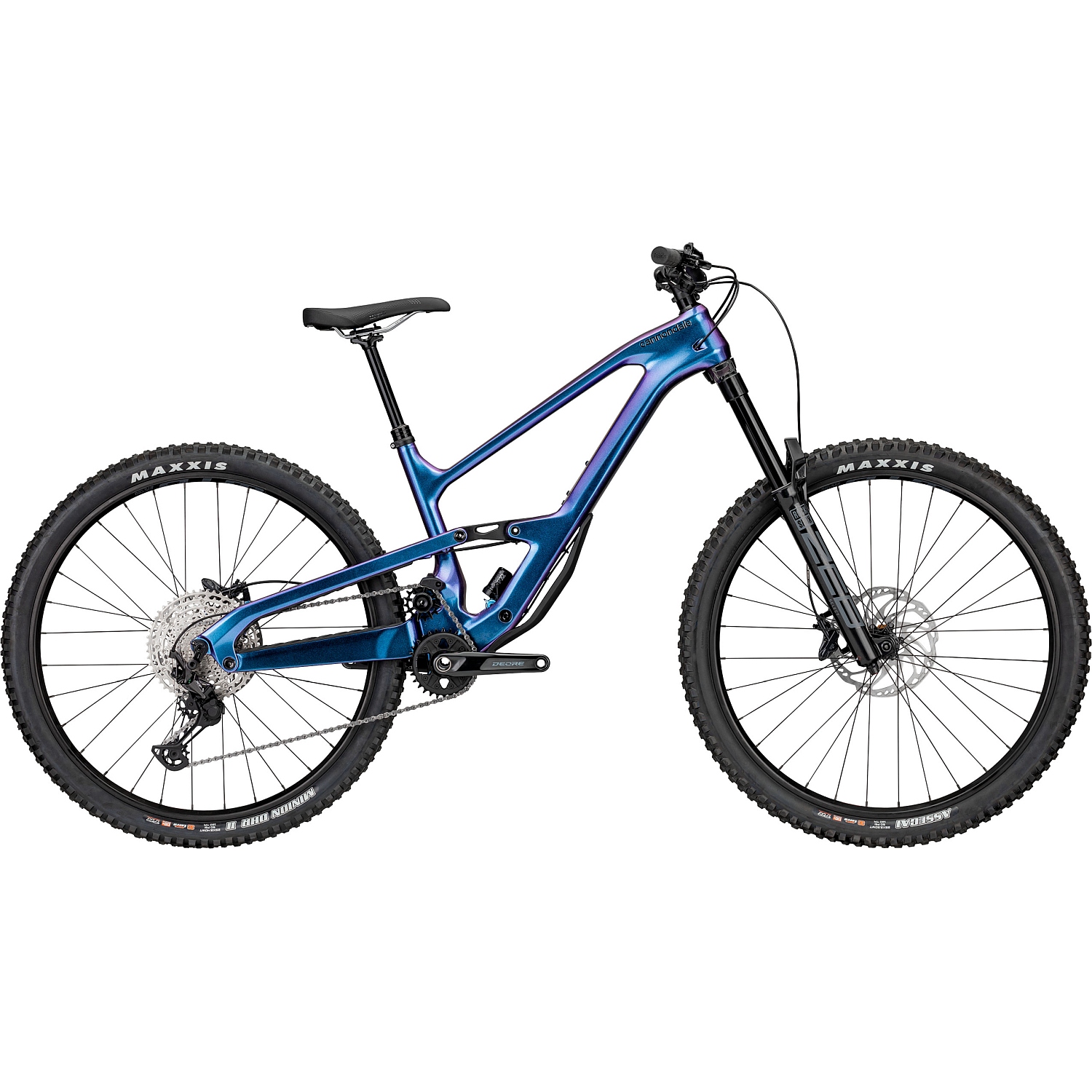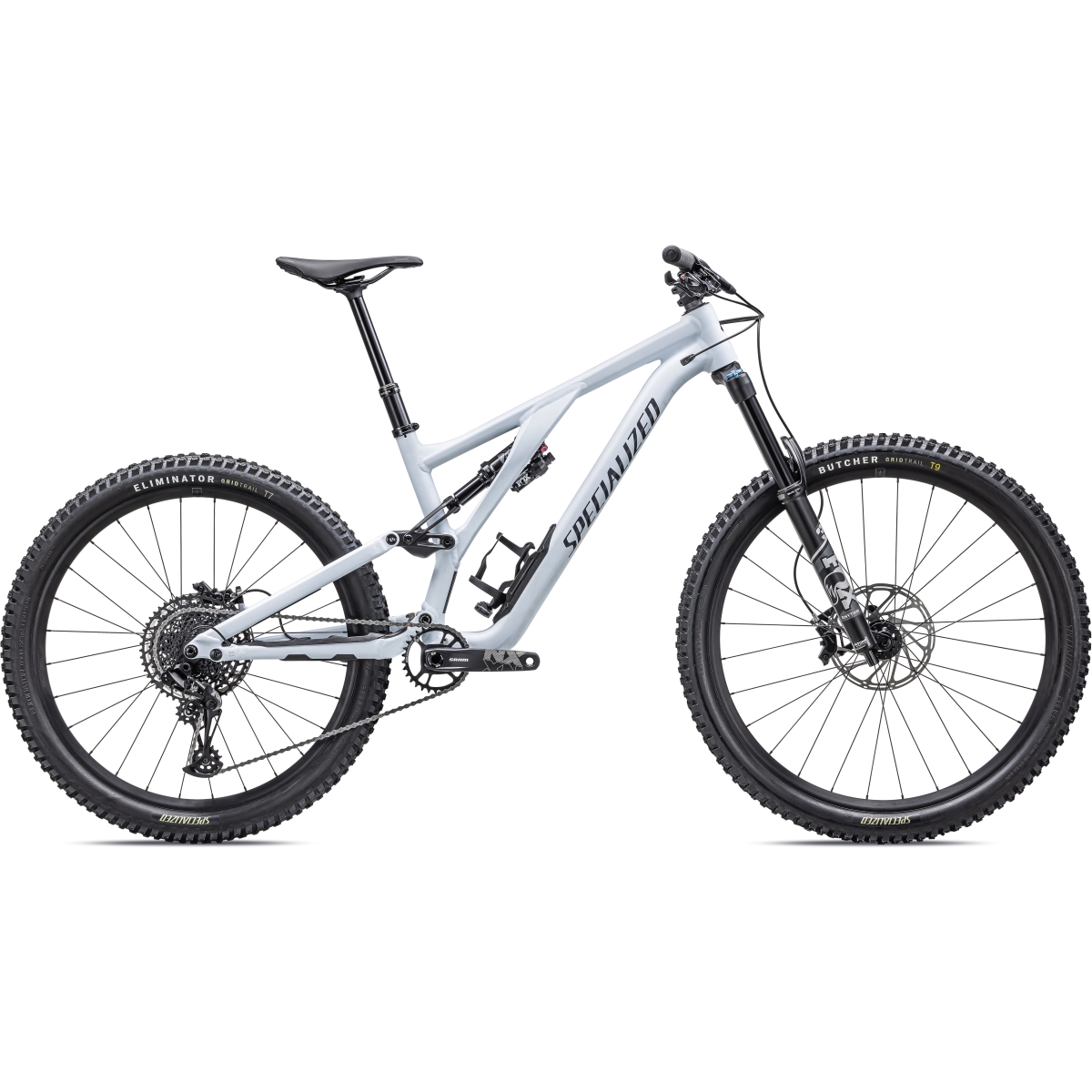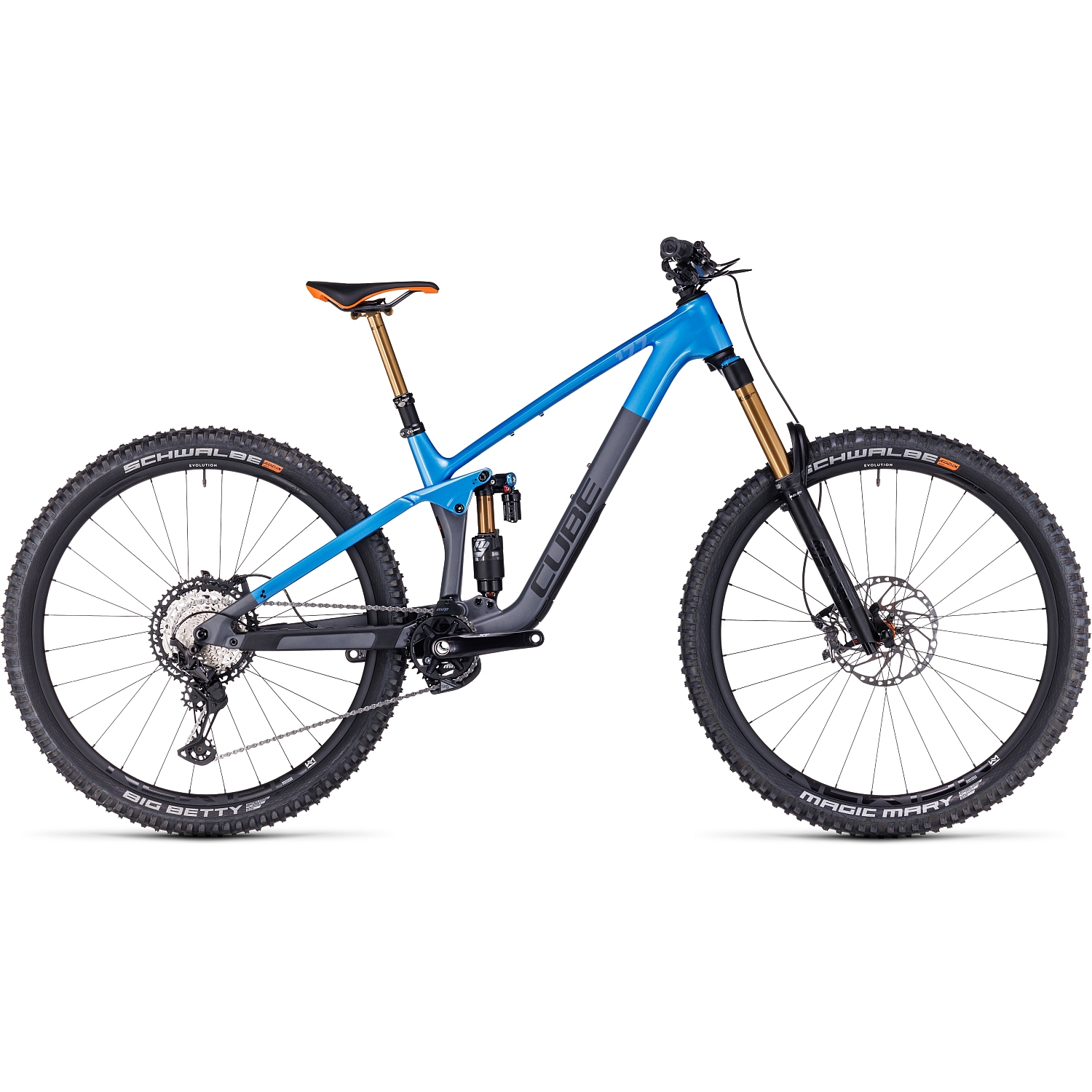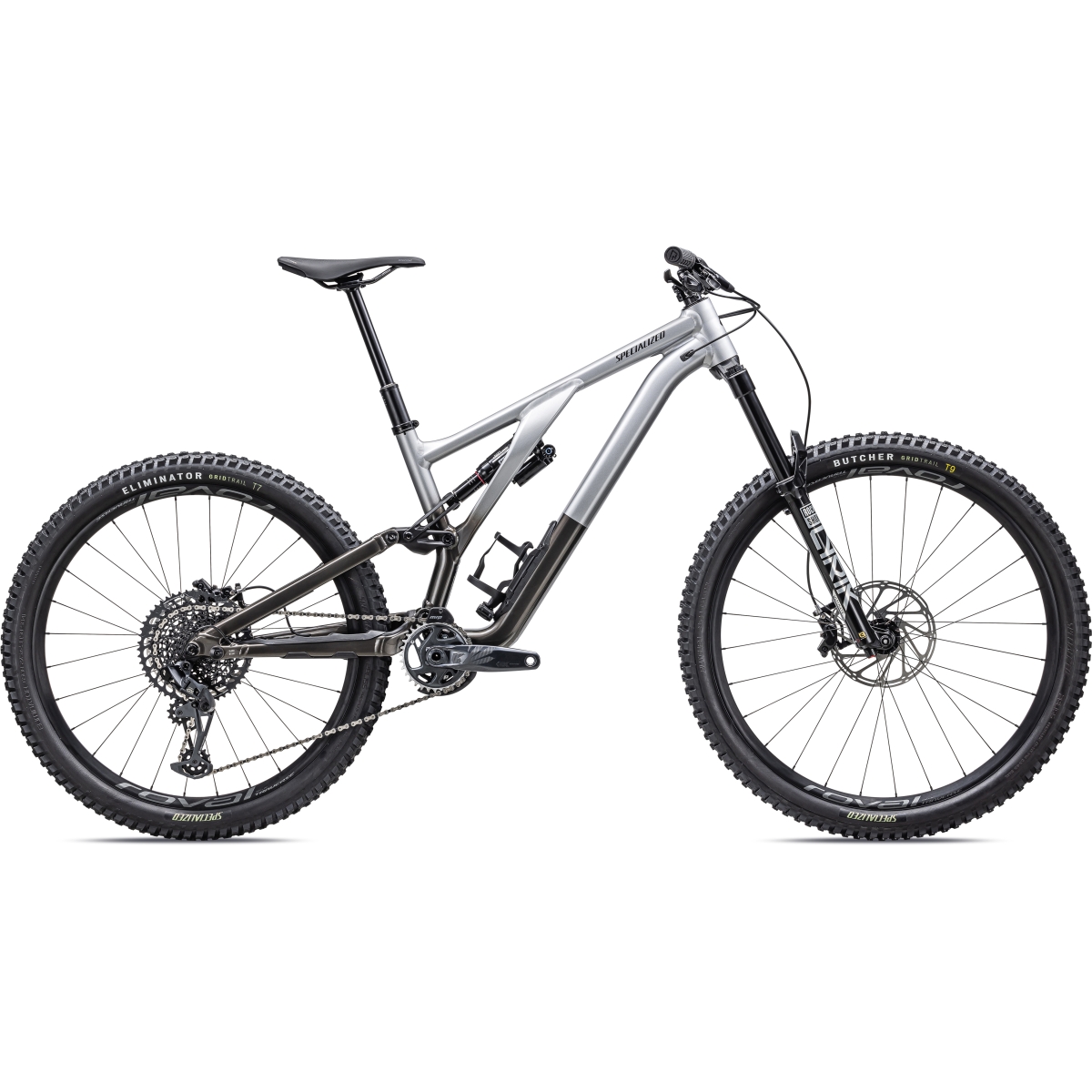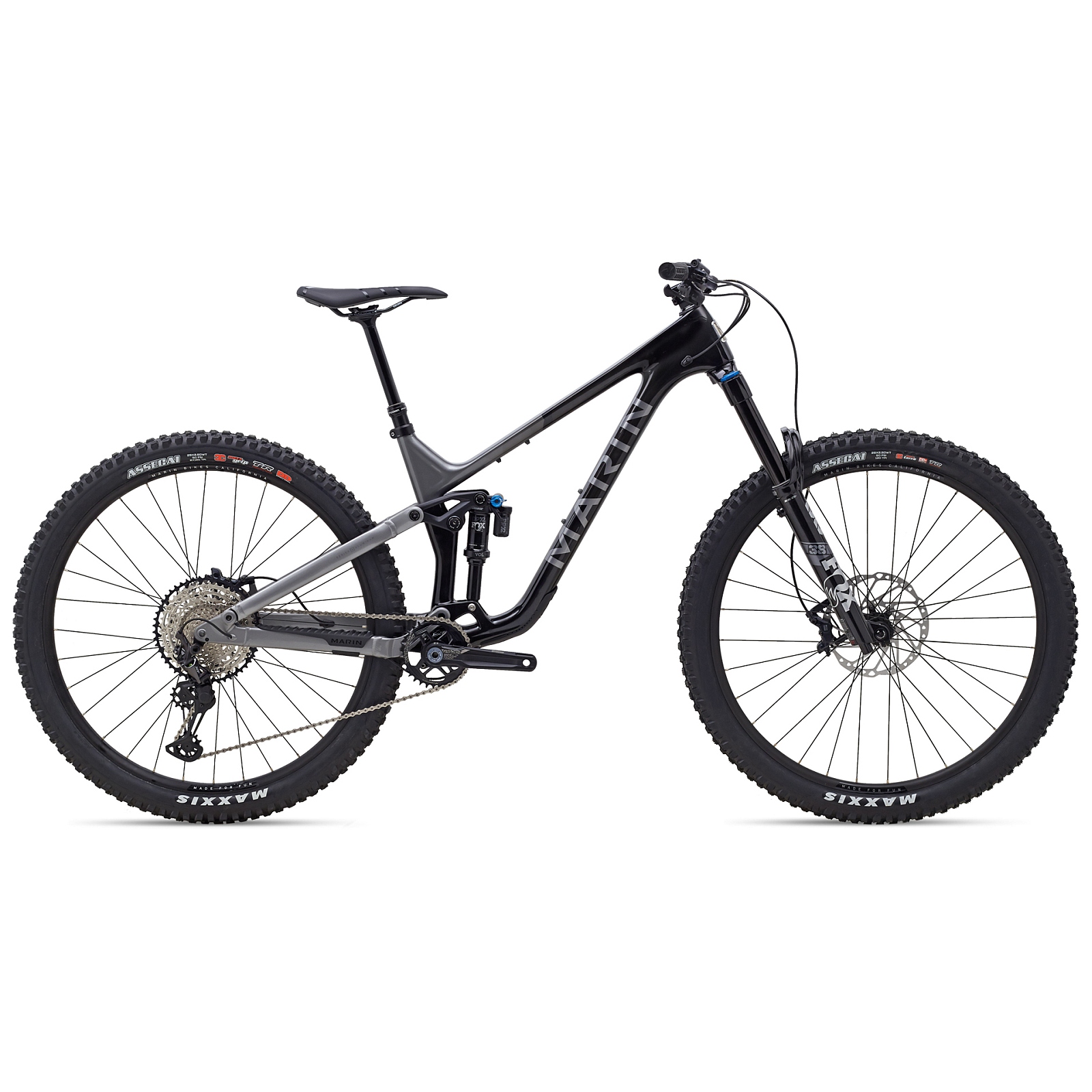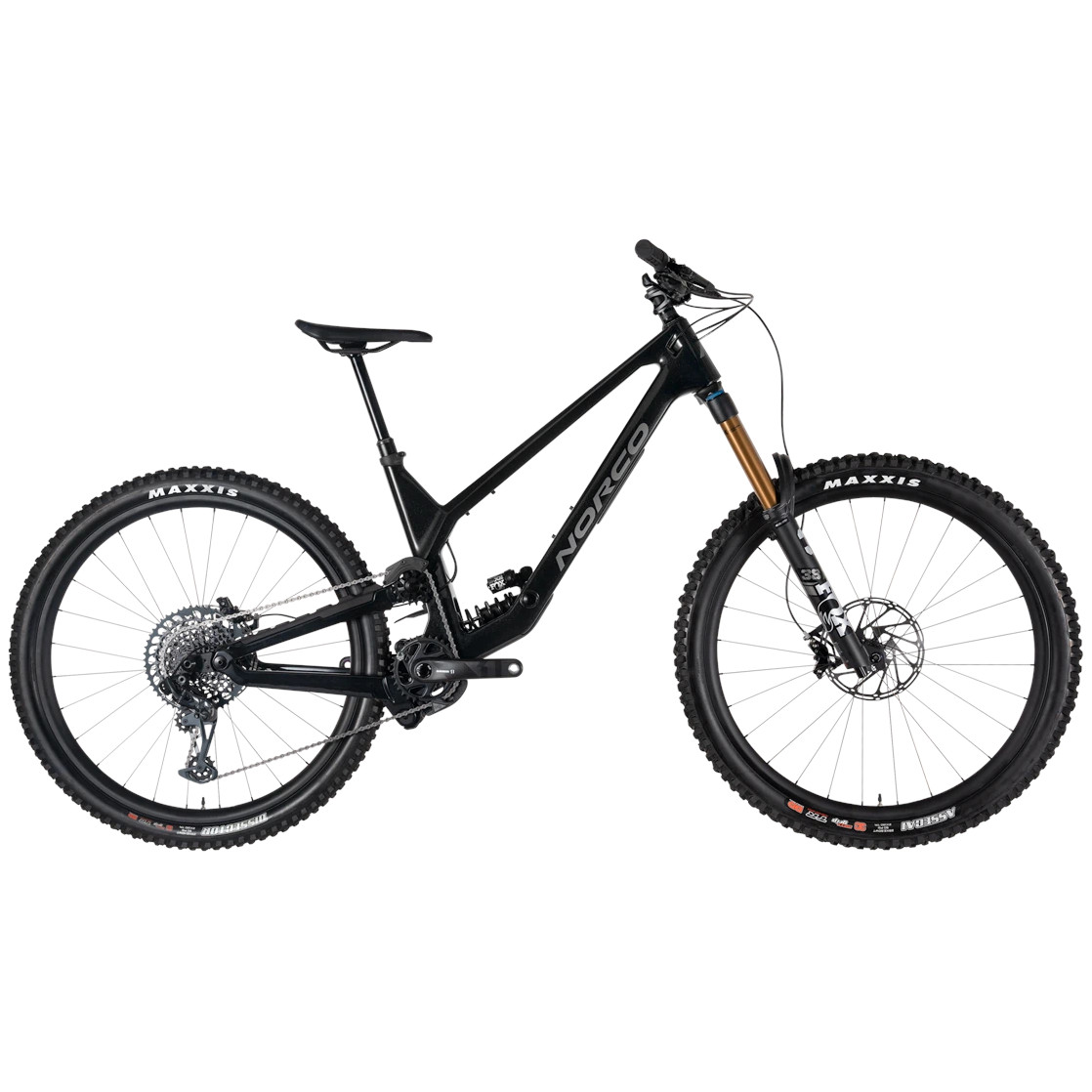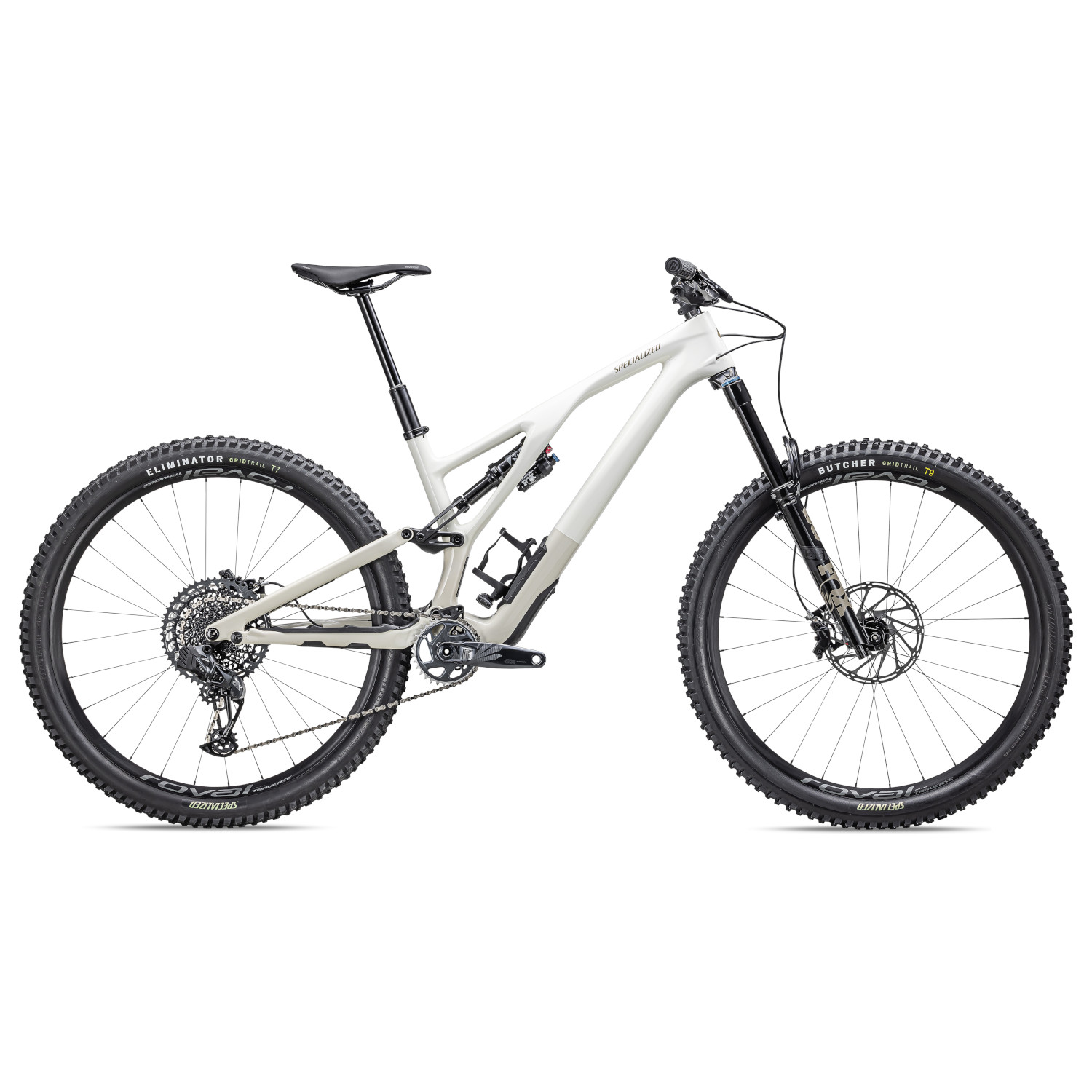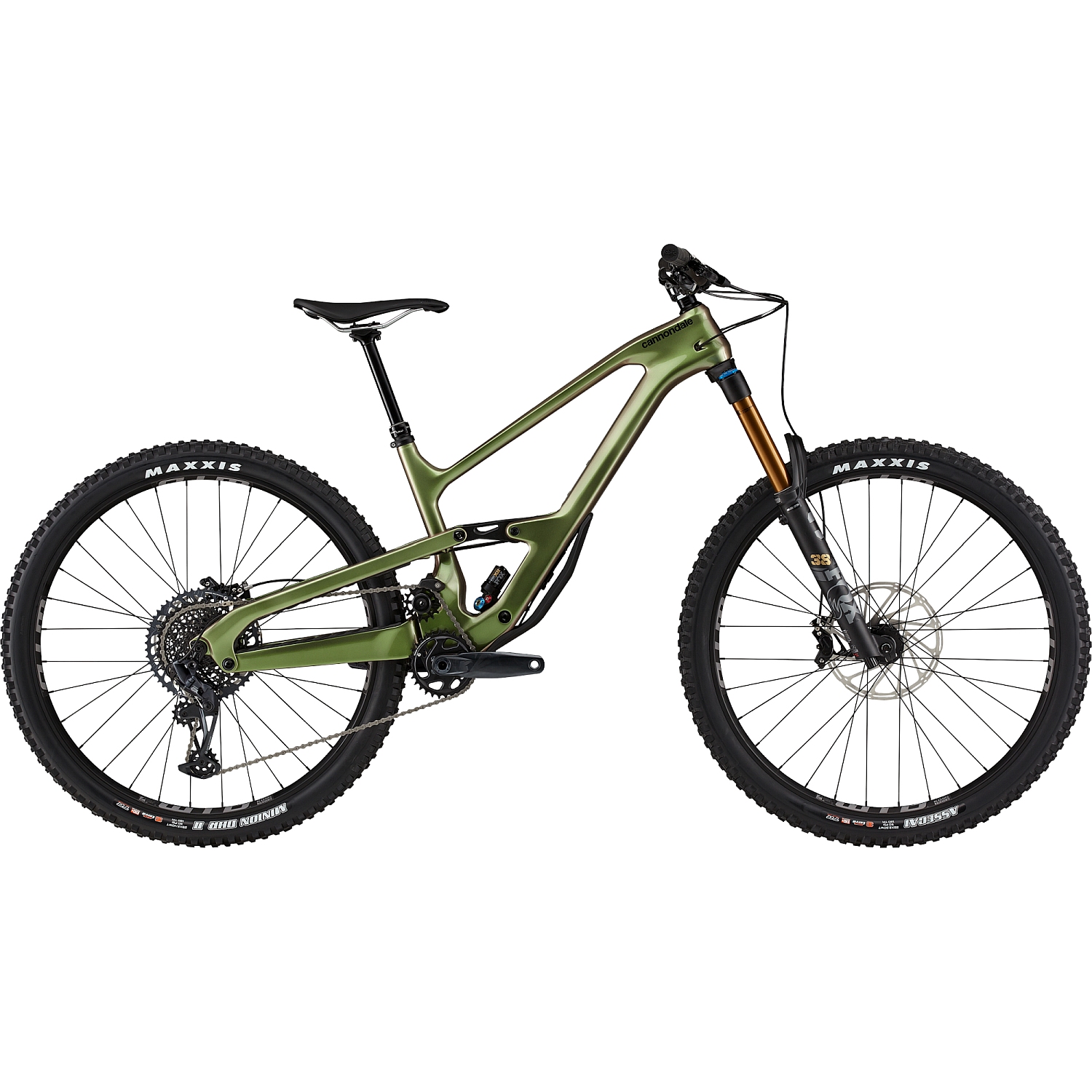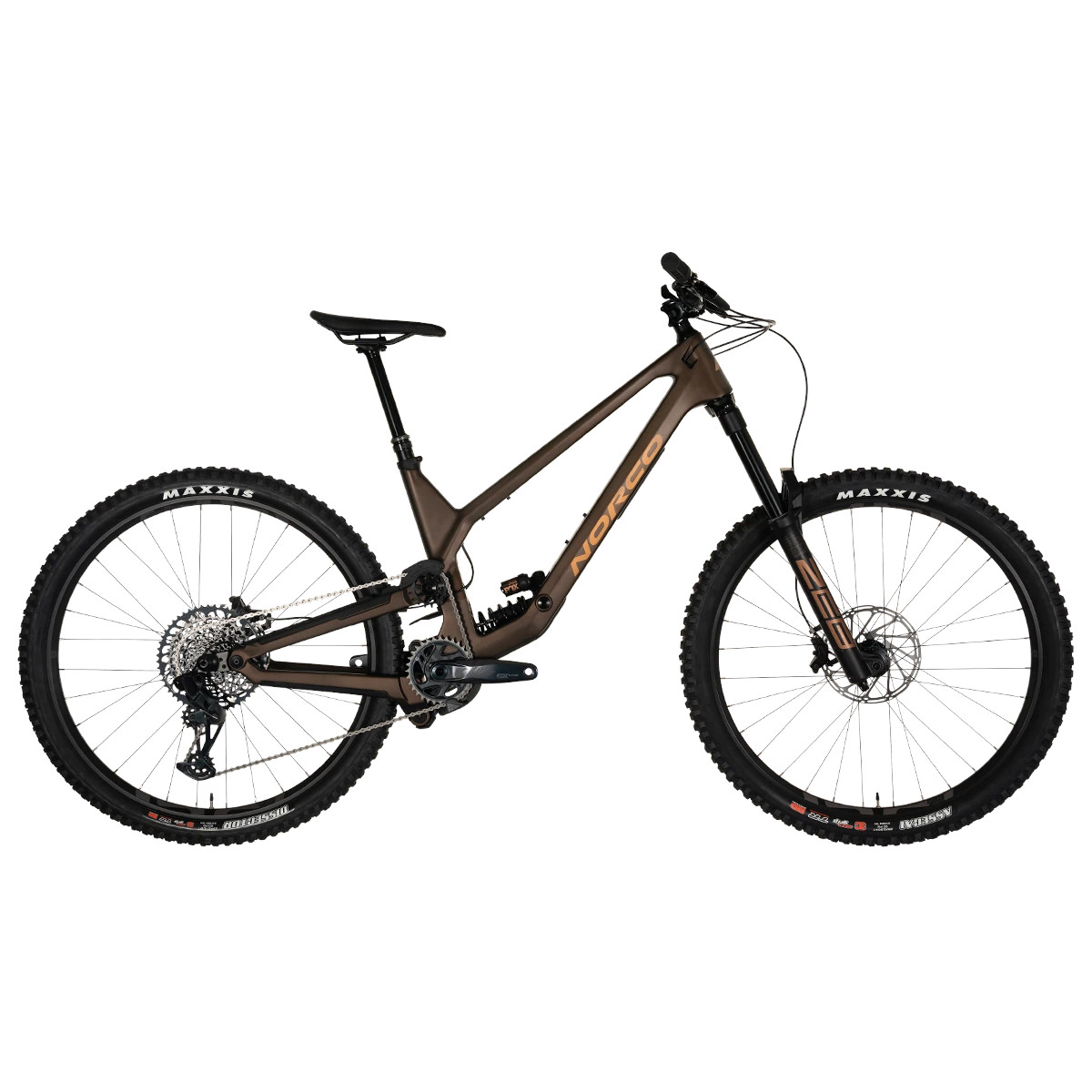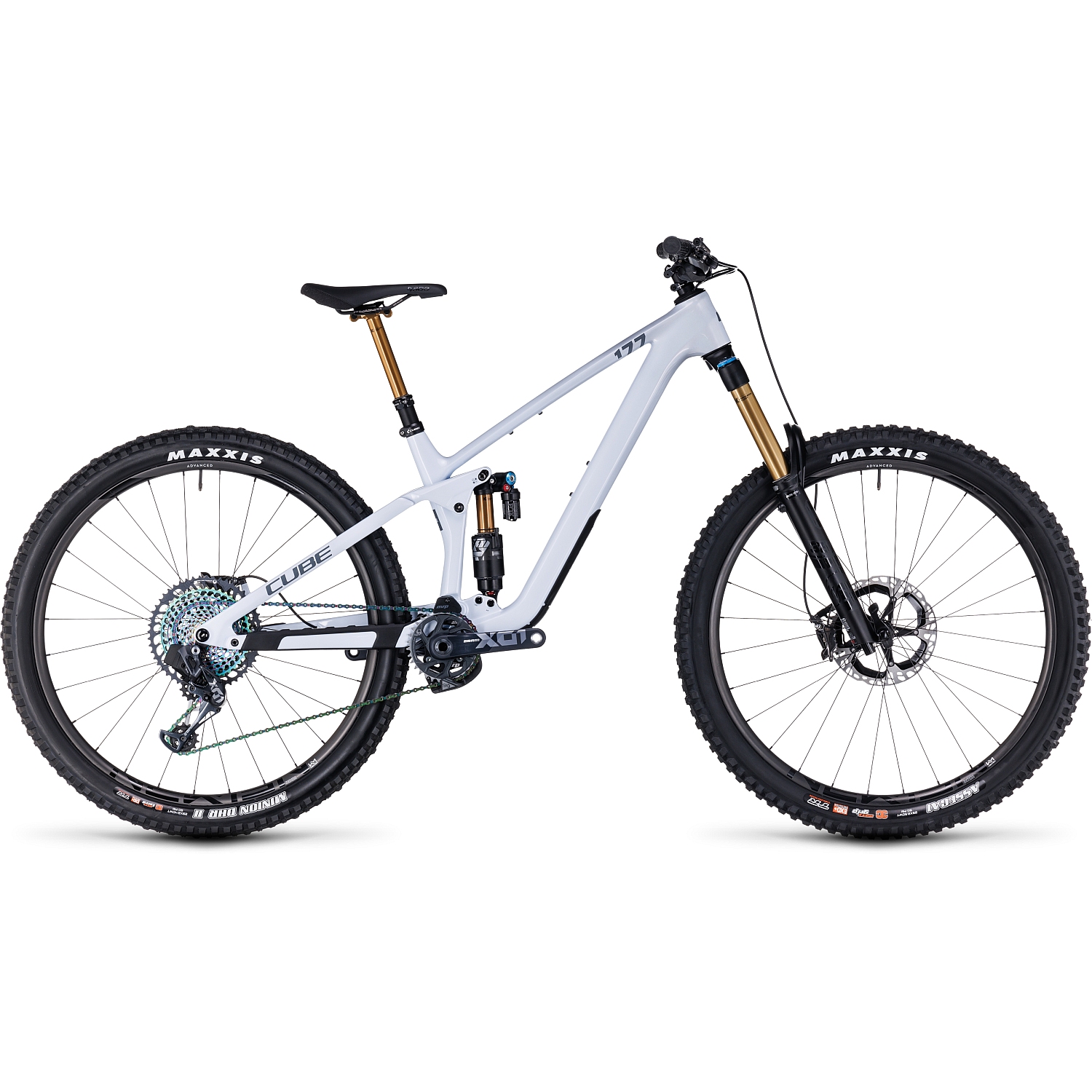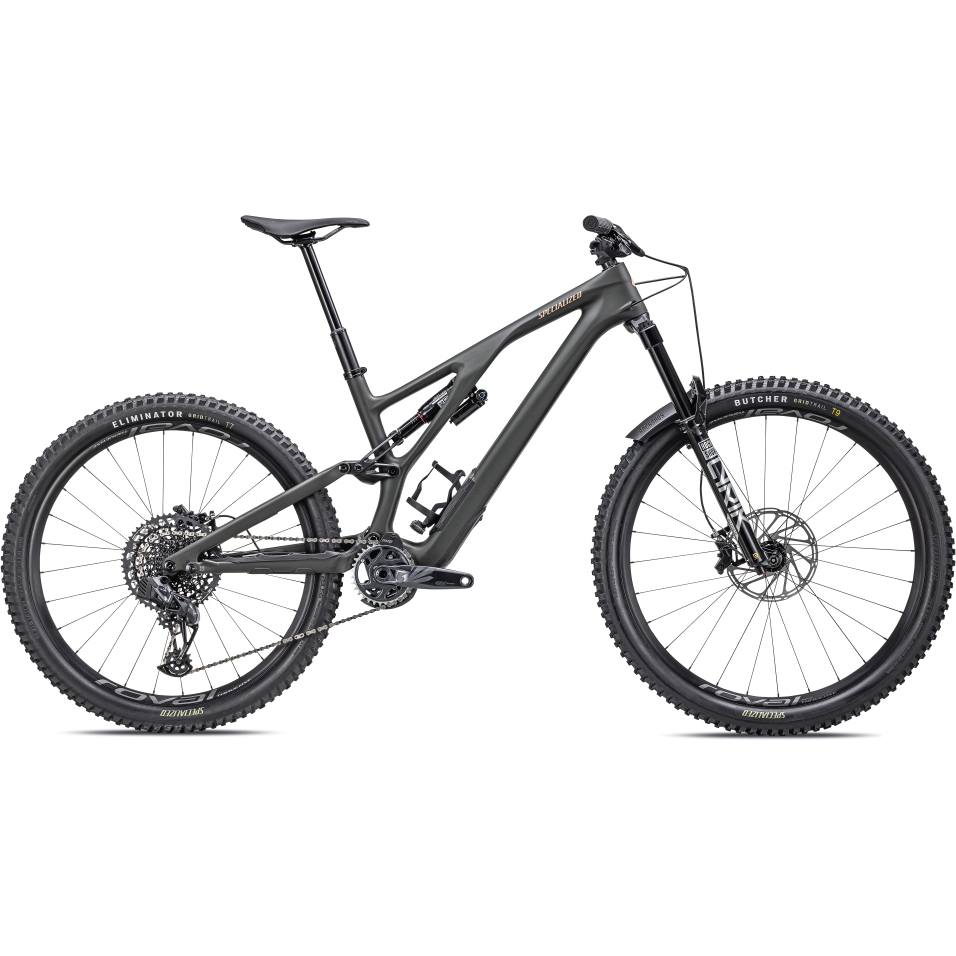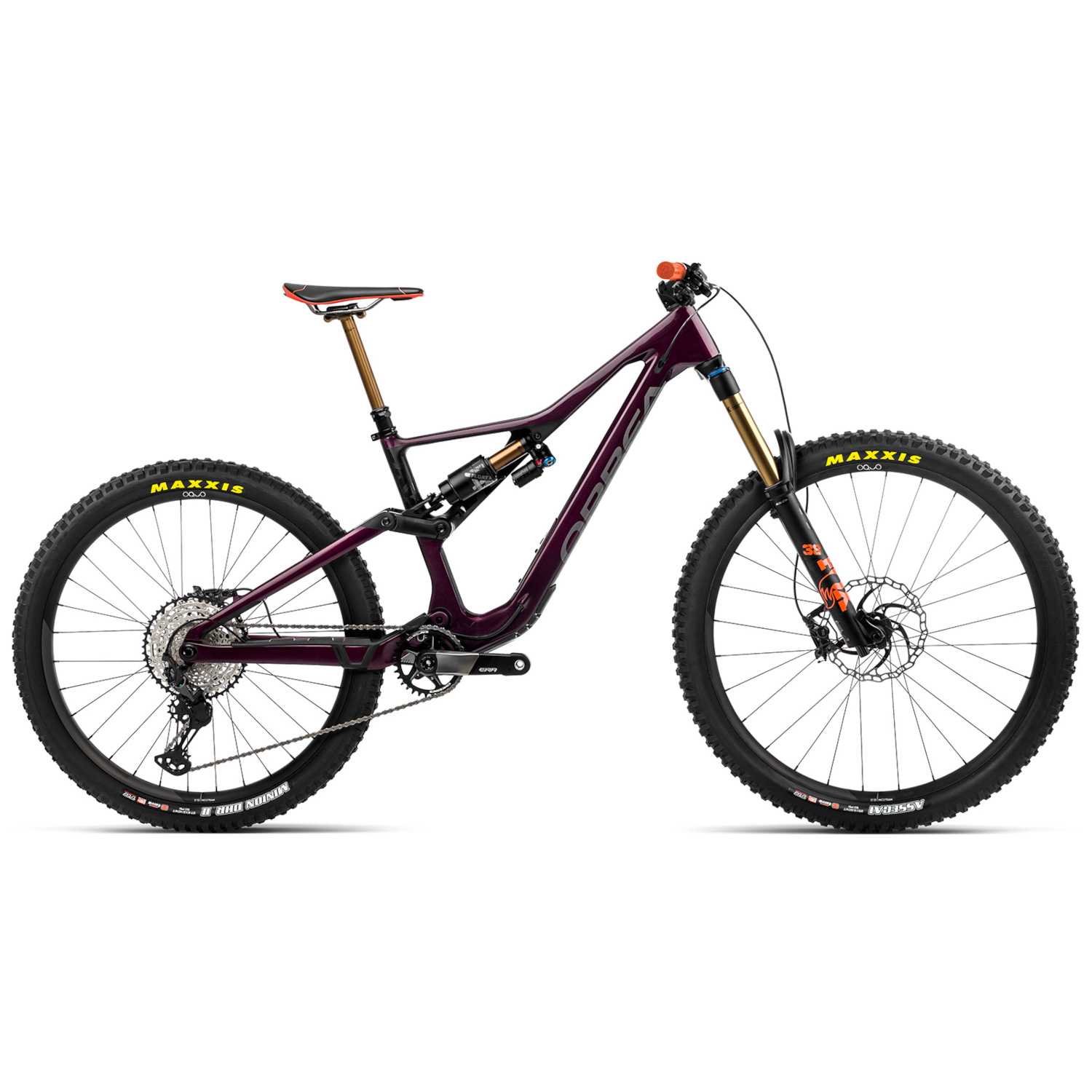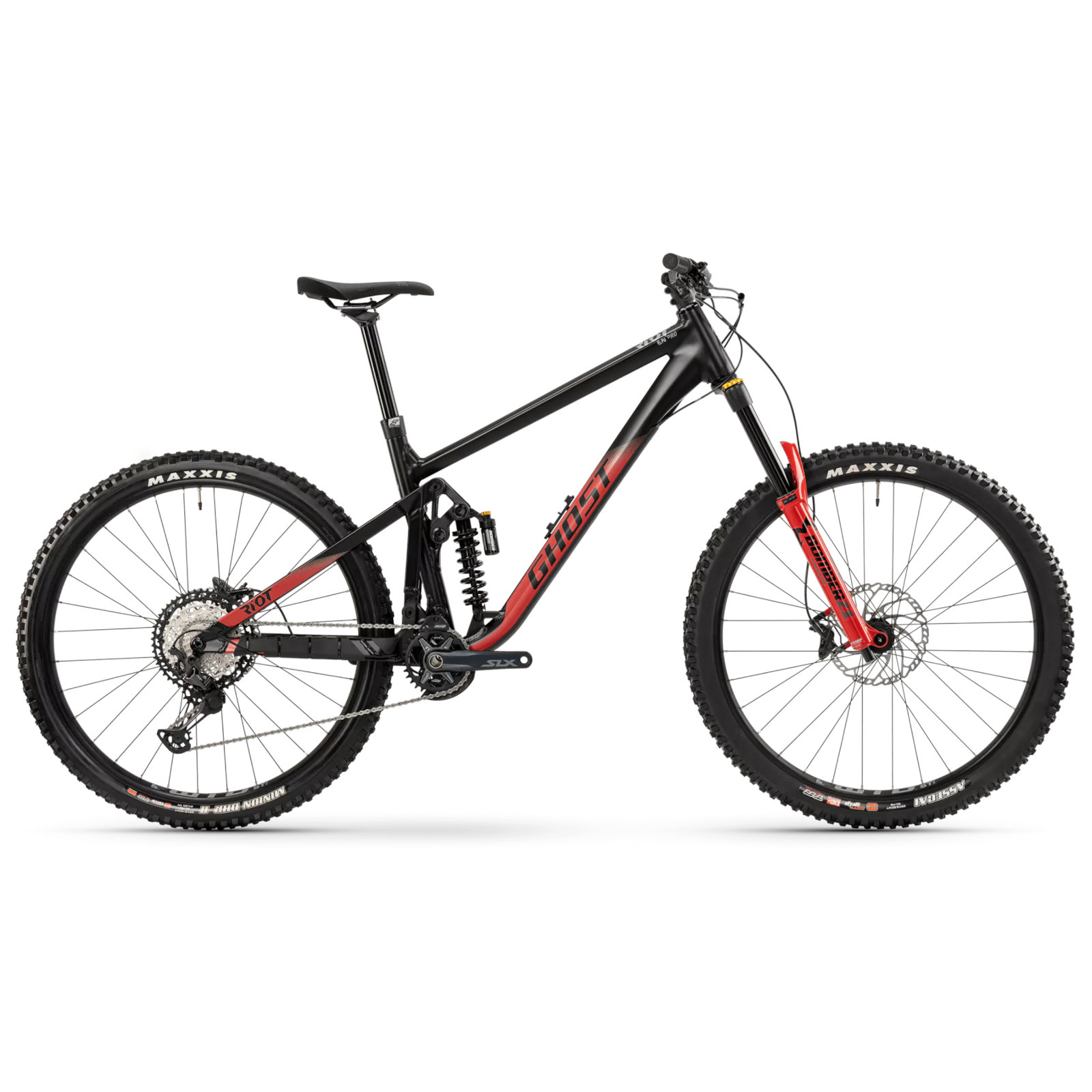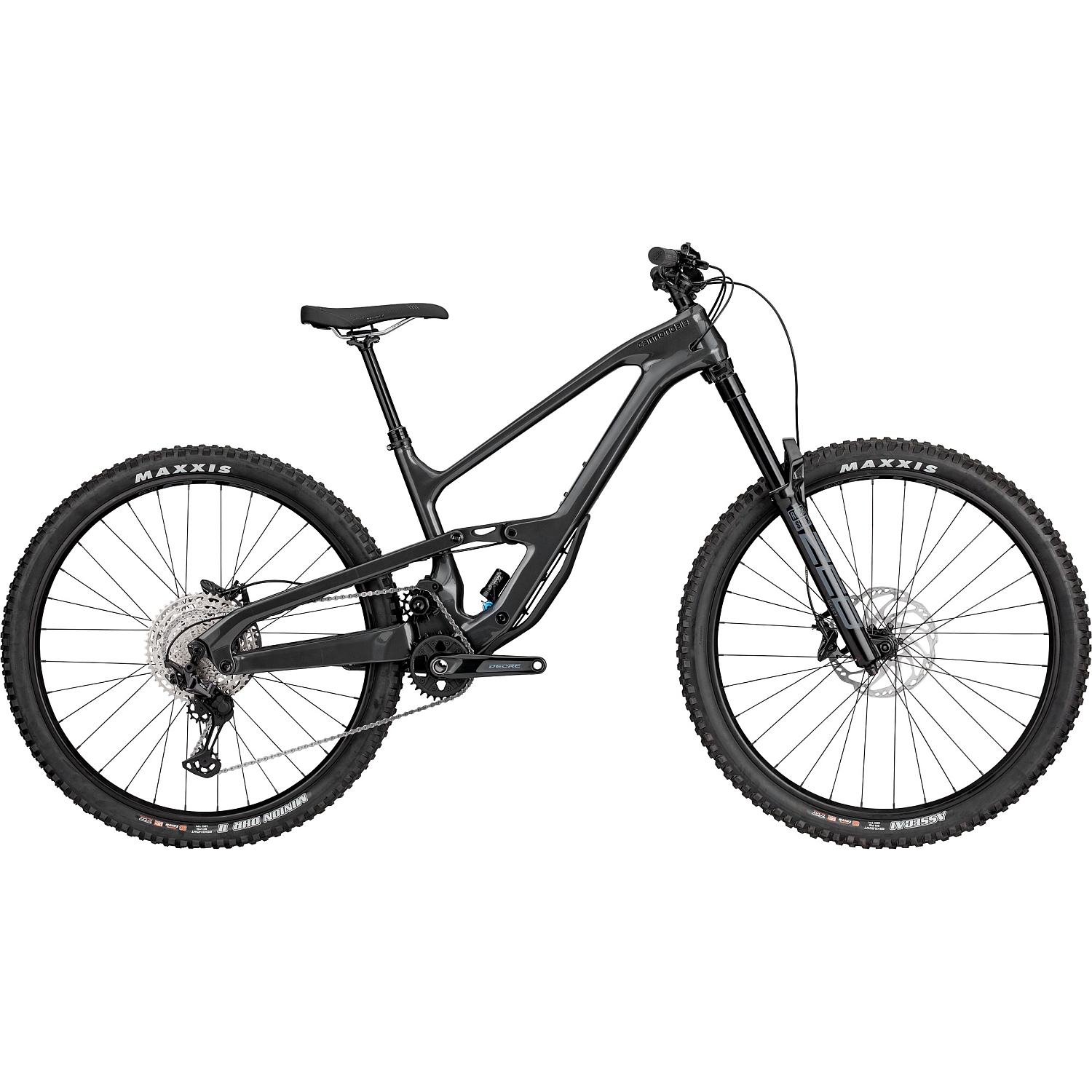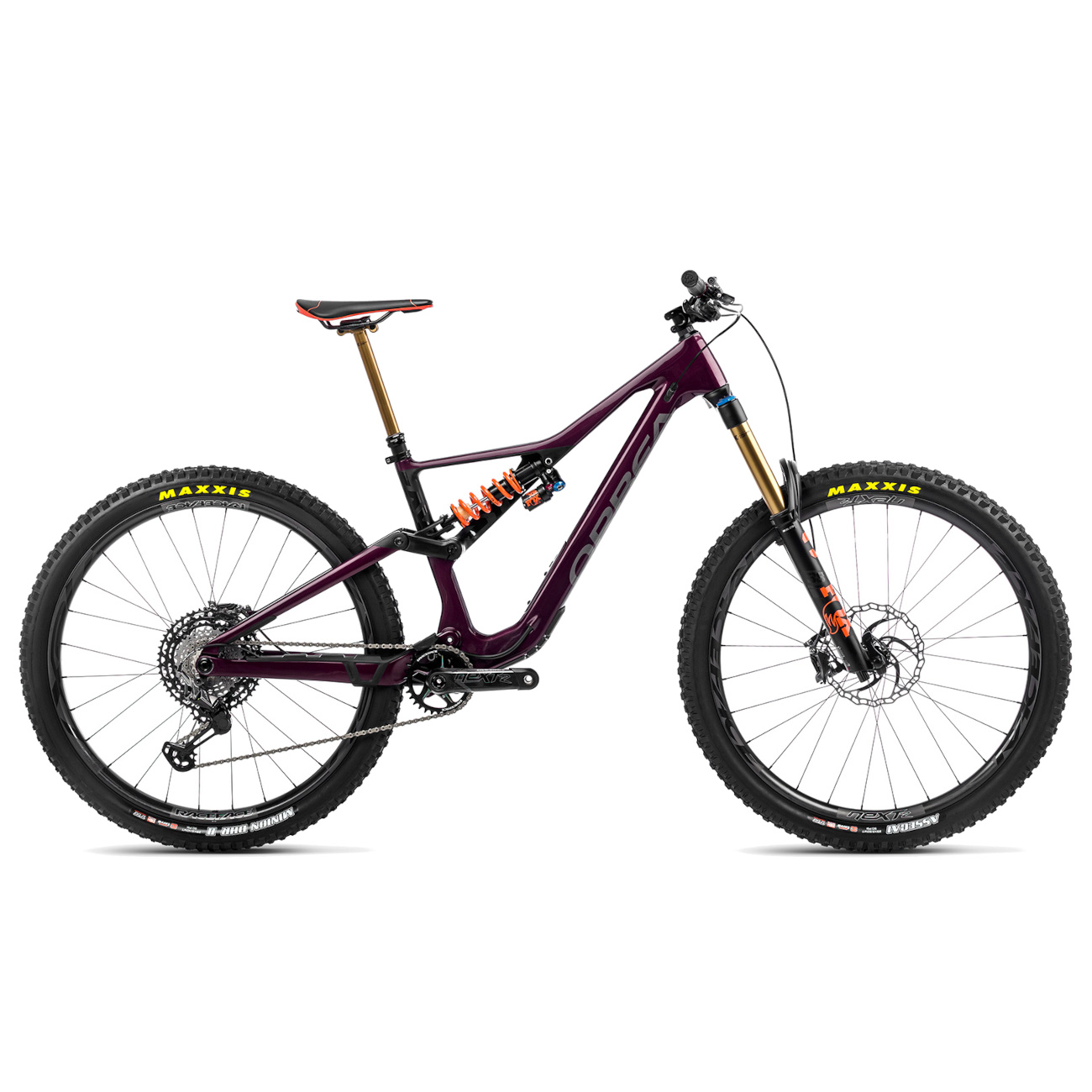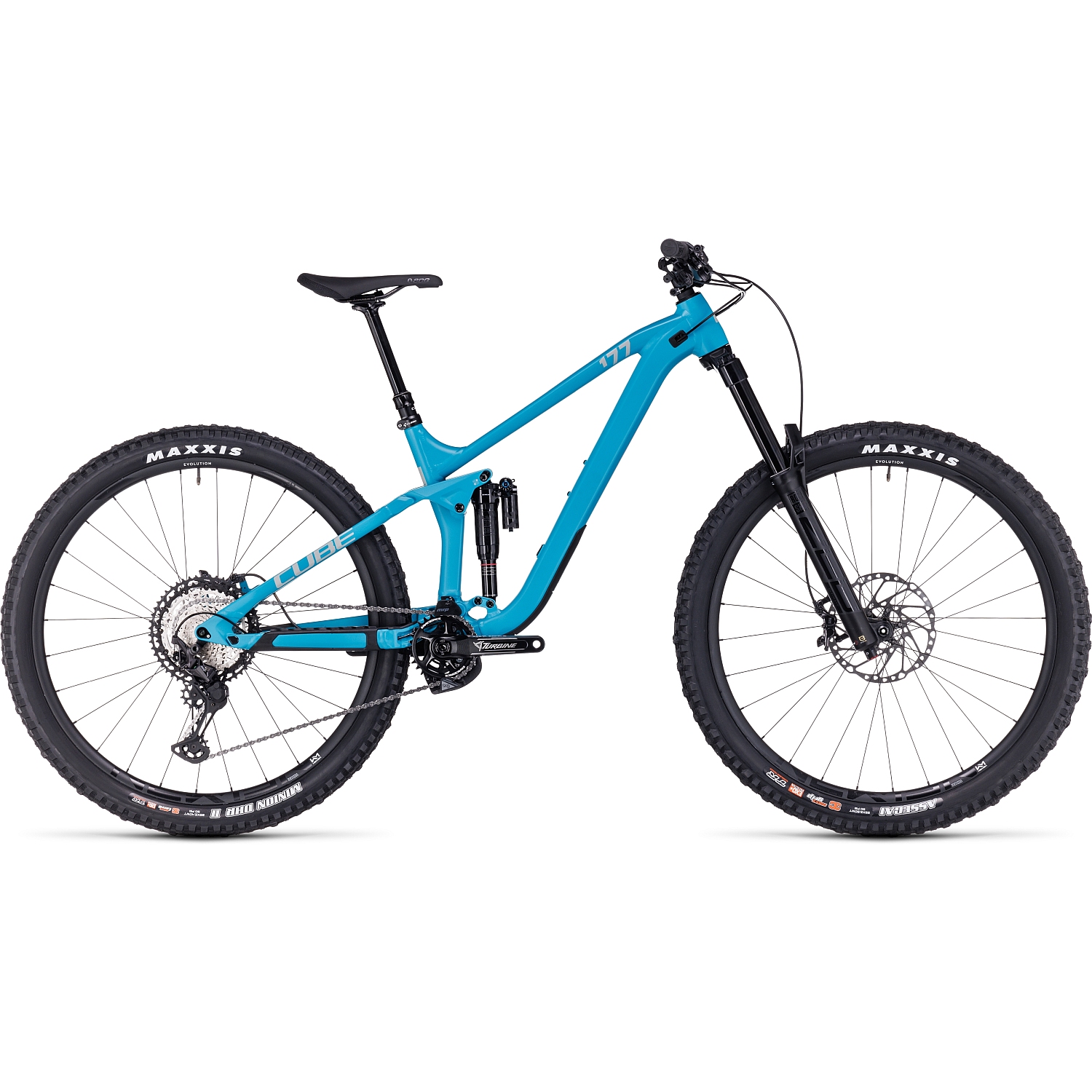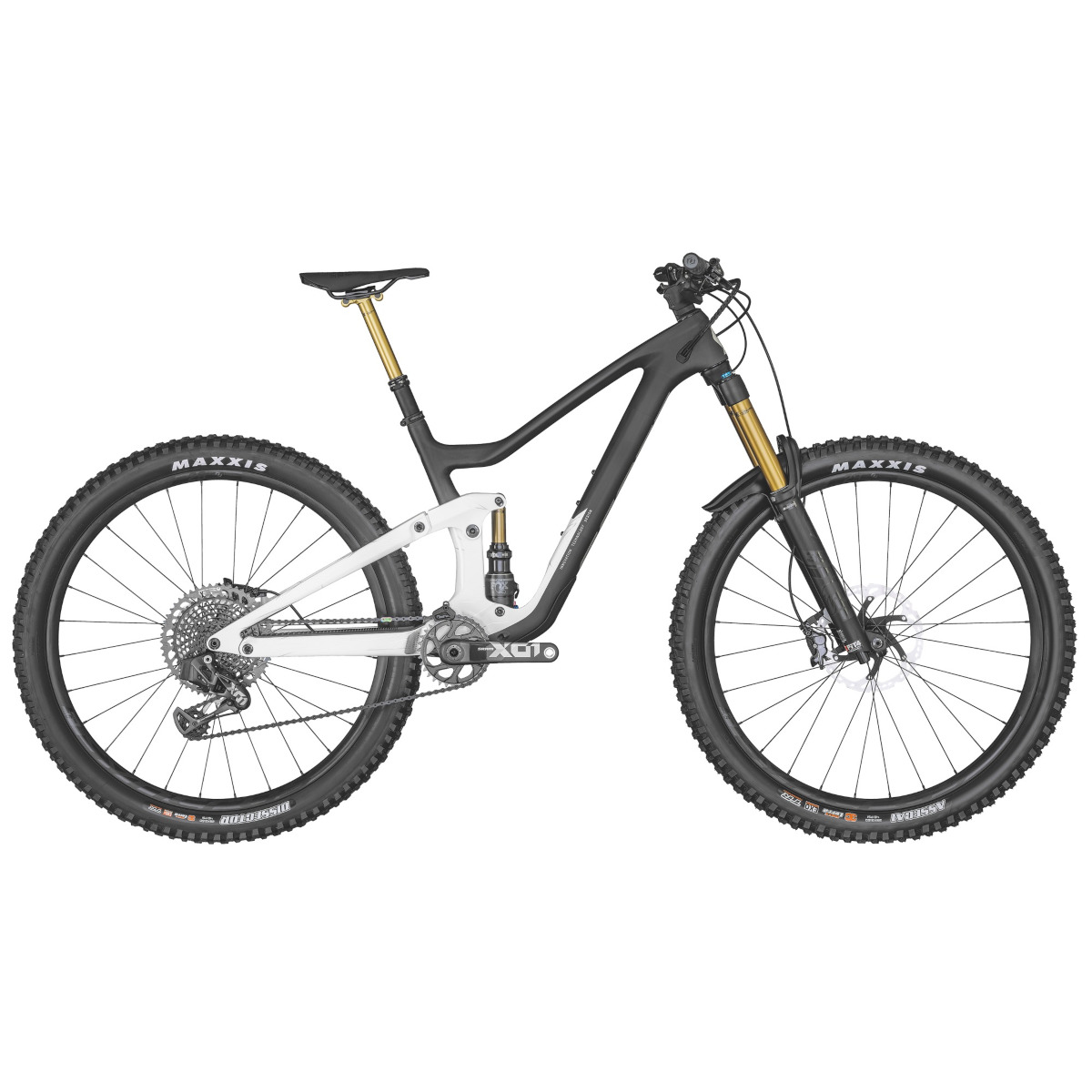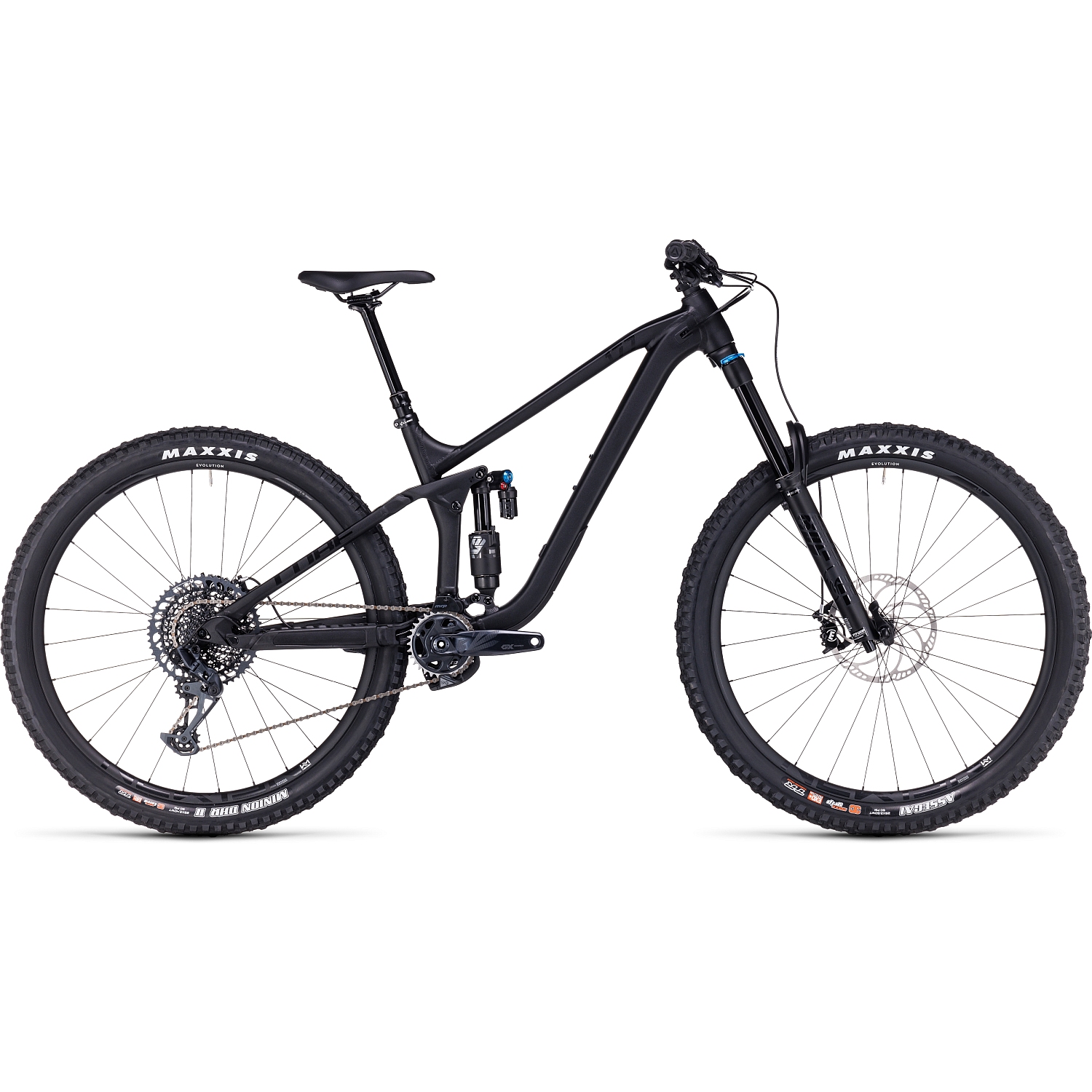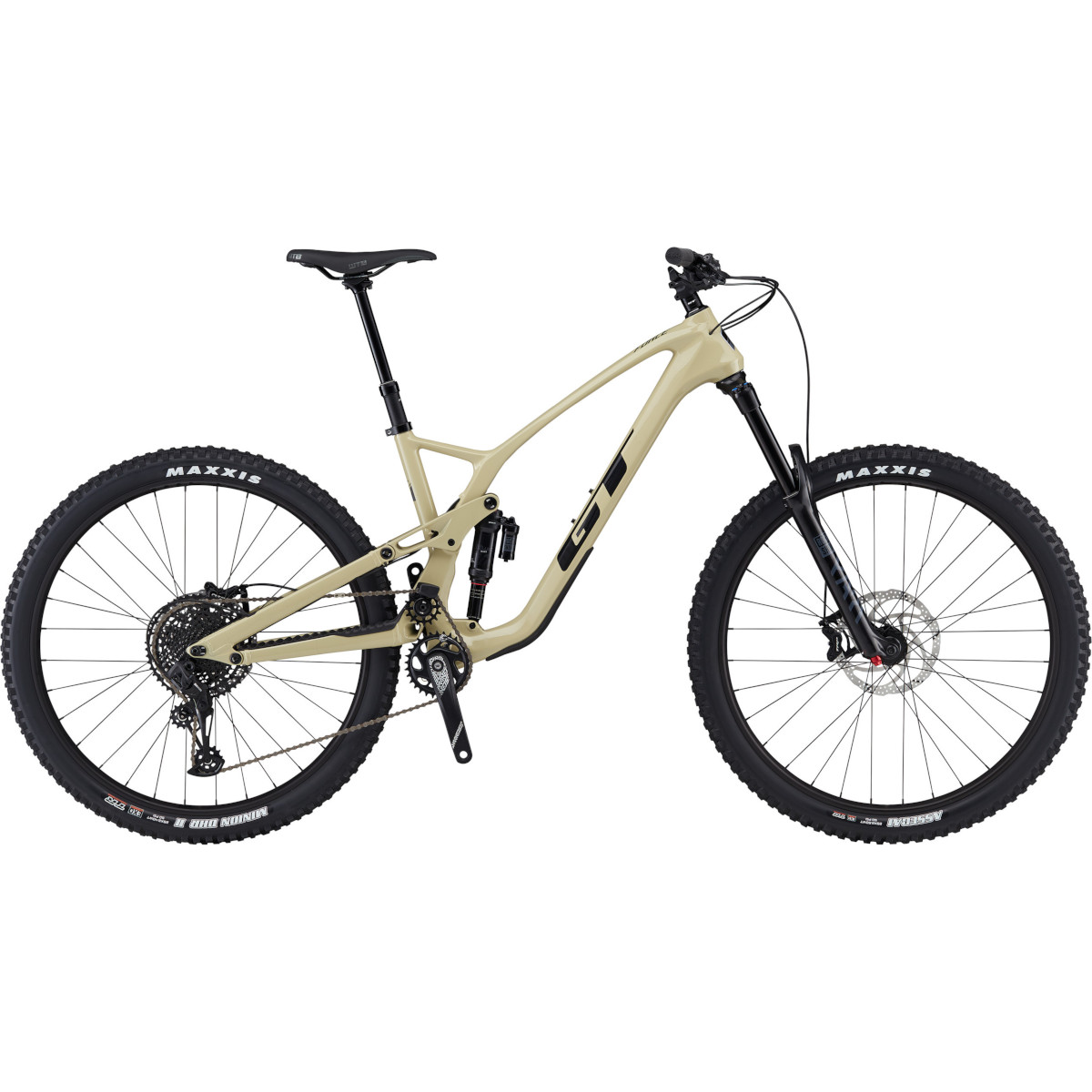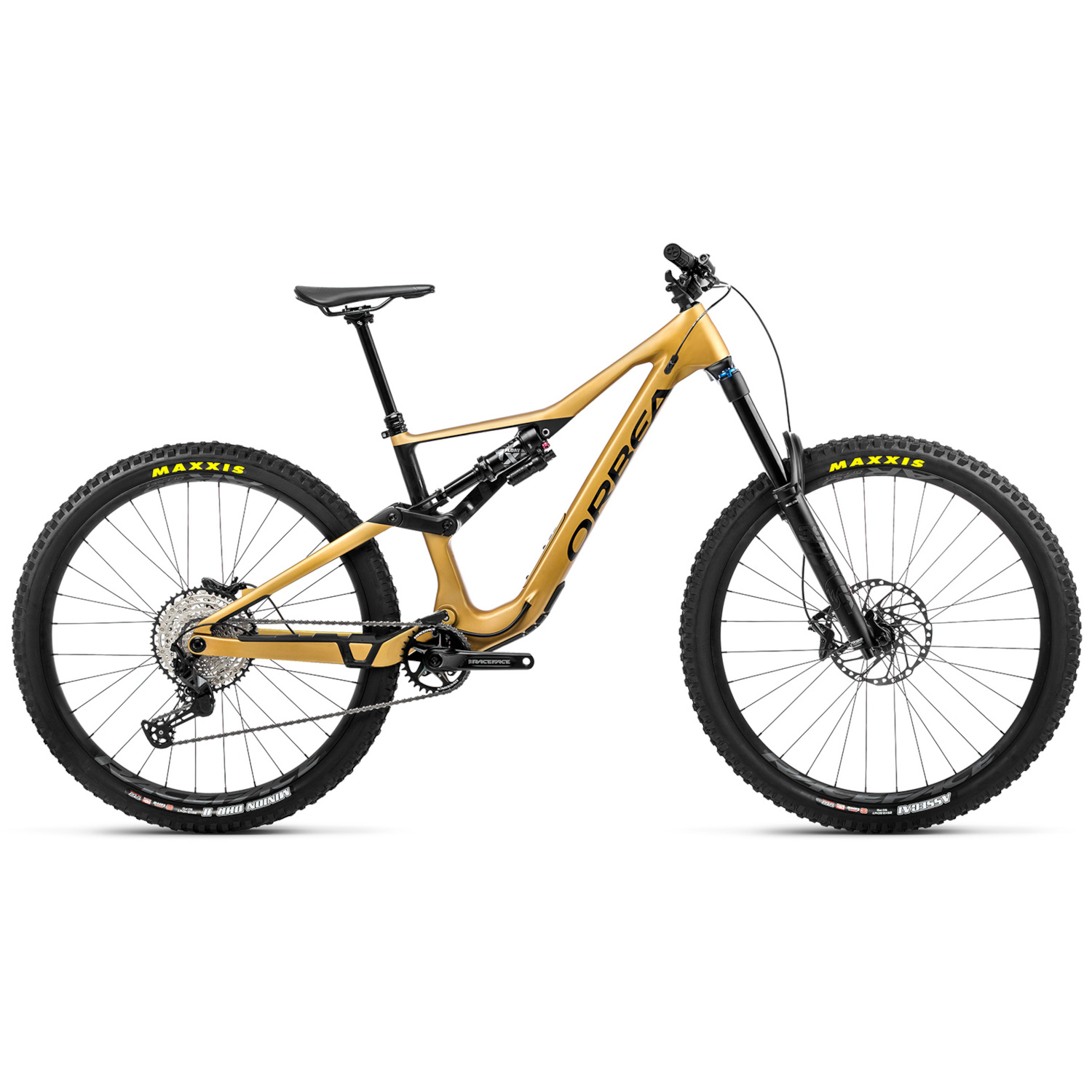- Home
- Cycling
- Bikes
- Mountain Bikes
- Full Suspension Mountain Bikes
- Enduro Bikes
Enduro Bikes – Trail Flow Meets Downhill Skills
Plenty of suspension travel for epic descents, yet nimble on the mountain and thrilling powerhouses on the trail – enduro bikes are perfect for riders who like to shred rugged trails, take on drops and jumps on the descent and, at the same time, don't shy away from steep uphills. But what actually sets enduro bikes apart? And how do they differ from all-mountain or downhill bikes? This page features a summary of everything you need to know about enduro bikes and what you should look out for when buying one. Read more
What makes an Enduro Mountainbike?
Uphill fun and downhill thrills – this is how you could sum up the requirements for an enduro MTB. Perhaps the most wanted of the full-suspension mountain and electric mountain bikes are somewhere between a full-suspension touring and freeride bike, designed to bring all the strengths of these categories to the table. This means: an enduro bike is almost as nimble and fast uphill as a full-supension bike for touring, but descending on rough terrain, it is just as much fun to ride as a freeride bike. This is also the reason why the distinction has been made between enduro and trail bikes: although trail bikes also have a powerful suspension and are designed for fun on technical trails, enduro mountain bikes come up trumps on steep terrain with even more suspension travel, a slacker head angle and longer wheelbase.
In order for an enduro bike to manage this demanding balancing act as a real jack-of-all-trades for ambitious riders who want to have it all, the developers and manufacturers of enduro fullys have to pay attention to two aspects in particular: lightweight components and sophisticated suspension. Because of the high demands and popularity of these bikes, enduros have also become real drivers of technology over the last few years. Many of the innovations on full-suspension mountain bikes in the recent years on suspension and geometries originally came from the enduro segment. For example, many of the new developments in shocks for low-speed compression come from the enduro sector, and the long top tube and short stem set-up currently popular on mountain bikes was first used for enduro.
The current trend in enduro is towards a little more suspension travel – which also makes them even more different from trail bikes, which have a little less suspension travel. 150 to 170 millimetres of travel at the fork and around 160 mm at the rear, wide handlebars and extremely grippy, treaded tires with knobs – with these ingredients, enduro bikes have recently even taken freeride bikes down a peg or two. Enduro bikes are good for riding uphill and are absolute powerhouses too, especially on undulating single trails. That's why, on balance, enduro is probably the most versatile and, not surprisingly, one of the most popular categories of mountain bikes.
Who Needs an Enduro MTB?
Challenging descents, no compromises on technical single trails, epic tours in the mountains and always ahead on the local track: if these are your requirements, then you need an enduro bike – it's as simple as that.
How are they different to freeride bikes? You want to really earn every descent and ride up on your bike instead of (like freeriders) taking the shuttle – a matter of honour.
What makes them different to touring or trail bikes? Enduro bikes have significantly more suspension travel and thus a much greater potential for fun, without stopping the uphills from being fun too. In terms of suspension and tires, enduro bikes are like slimmed-down freeride bikes, but should still perform as well as a touring bike on the uphills. You may be thinking that such an all-singing, all-dancing solution is just the stuff of dreams, but enduro bikes have proven themselves over the years: they are the perfect all-rounders among mountain bikes - with a clear focus on riding thrills on technical trails and fast descents.
MTB for Enduro – Which Components Are Important
For an enduro MTB to be as highly-performing and as versatile as the theory promises, there are two things that matter: a low weight and powerful, high-quality suspension. Only with these ingredients can an enduro bike really release its full potential, setting you free to ride uphill without any limits on the downhill either. With such high demands, one thing is also clear: if you want to treat yourself to a good enduro MTB, you should really go to your limit when it comes to price. As with every bike, the same goes for enduro: every gram less costs a few euros more. And here, more so than in many other bike categories, it’s worth investing a little bit more.
The Frame Material
As with every mountain bike, the classic question arises: aluminium or carbon? And with enduro, the answer is quite simple: if possible, you should treat yourself to an enduro MTB with a carbon frame, because having the lowest possible weight plays a decisive role here. Carbon fibre is lighter than aluminium, which is why high-quality enduro bikes always have carbon frames. Aluminium is a more affordable frame material, functional and in no way inferior to carbon in terms of durability. There are basically no differences between carbon and aluminium when it comes to frame stability. So if your budget is limited, it can also be a smart decision to save money on the frame itself and choose an aluminium model, and then splash out on some higher-quality components.
The Suspension
The suspension, i.e. fork and shock, should provide a lot of travel for enduro: around 160 millimetres at the rear, and 170 millimetres are currently popular on the fork. Seeing as low weight is also very important here, air suspension elements are often used on enduro bikes. For a more gravity-based set-up, a shock with a steel spring is recommended, especially for heavier riders. Since enduro bikes, despite their long suspension travel and shred performance, should not make any compromises on the uphill, low-speed compression is highly recommended on the suspension fork and air spring shock.
This means the fork and shock should offer three modes of damping: open for full downhill performance, medium for the best suspension performance on fast-paced single track, and a very tight mode or even lockout for long climbs. Such multi-mode damping is key for enduro and bikes without this feature should not even be considered. And what’s more, this feature is only really convenient and effective when you can operate it remotely from your handlebars. If the lever for adjusting the compression is always at hand, then you really will use the different modes available whenever the terrain requires.
The Tires
On the one hand, the tires on an enduro bike must provide good grip and stable cornering for fun on the trails and snappy descents, but on the other hand, they should also roll easily. This is why most enduro bikes are fitted with 2.3 and in extreme cases up to 2.6-inch mountain bike tires with a pronounced tread and knobs, similar to freeride bikes. The difference: the tires on an enduro bicycle should be as light as possible. Instead of a highly puncture-resistant heavy-duty carcass, lightweight tires are used here – which deliberately compromise on puncture protection. If you really want to go all out with your enduro bike and ride a lot on rugged terrain, then you should mount tires with maximum puncture protection. At BIKE24, you will also find a large selection of tires for your enduro bike.
The Brakes
For current enduro bikes with their long-stroke suspension, the trend is going towards even more performance, which is why most product developers are fitting powerful brake systems to their full-suspension enduro bikes. The more important going fast down steep downhills is to you, the more importance you should place on a four-piston brake system. They are somewhat heavier than the two-piston disc brakes used on mountain bikes for cross-country and touring, but they are more powerful and, in combination with large discs, more stable. They therefore provide consistent performance without overheating, even during long, heavy braking. No matter which disc brakes are fitted to an enduro bicycle, the discs should definitely be large - preferably with a diameter of 203 millimetres. The larger the brake disc, the better it can withstand the heat on long descents.
The Wheels
The wheels on an enduro mountain bike should be solid, but still as light as possible. A balancing act which, if in doubt, should tip in favour of lower weight, because the wheels, as a rotating mass, have a decisive influence on how fast you can take off on your mountain bike and how nimble it feels. In terms of wheel diameter, there is currently a slight trend towards larger 29-inch wheels on enduro bikes, which roll more smoothly and thus are more dependable on rough terrain. Smaller 27.5-inch wheels, on the other hand, are a little more stable due to their design and promise somewhat livelier handling. As such, the wheel diameter which makes the most sense on your enduro bike is mainly a question of personal requirements and riding style: if you're looking for a more manageable, playful bike, you'll prefer 27.5 inches, but if you like to shoot off over rugged terrain at high speed, 29 inches offer a little more stability and a bit more of a smooth ride.
What are known as Mullet setups are also being seen more and more often. For those unfamiliar with bad hairstyles, the name is a reference to the uneven haircut that was popular back in the day: short at the front and sides, long at the back. As such, Mullet bikes have different wheel sizes, usually a 29-inch front wheel in combination with a 27.5-inch rear wheel. The advantage of the Mullet bike is that the 29-inch wheel at the front rolls faster and cushions bumps better, while the 27.5-inch wheel at the rear makes for precise handling. The small drawback: if you get a puncture, you’ll need to have different tubes or even tire sizes with you.
The Weight
The lower the weight of an enduro bike, the more fun it is to ride. That's why the scales should show a maximum of 15 before the decimal point; less is always better, of course. Higher-quality enduro bikes costing over 5,000 Euros should weigh well under 15 kilos and in the top class, weights are under 14 kilos.
Enduro MTBs – What Else Is Important When It Comes to Components?
Lowerable seat posts, also called dropper posts, are now common on almost all mountain bikes. They are an absolute must-have for enduro bikes. Only with a dropper post can you handle your bike on technical trails and fast descents without limitations. You should be able to drop your post using a remote control on the handlebars to make sure you really make use of this function. As is the case with setting low-speed compression, if you can lower the seatpost without having to reach around or even take your hand off the handlebars, then you really do make proper use of this important feature.
Last but not least: to ensure that you always have a good grip on your enduro MTB and can keep it under control, it’s also important to have handlebar grips that fit your hands. If the standard handlebar grips don't suit you, or if they are too thick or too thin, you can find a large selection of handlebar grips in our online shop.
Buying an Enduro Bike online
- Enduro mountain bikes are somewhere in between trail/touring and freeride bikes, and are therefore the special weapon among off-road bikes.
- In contrast to freeride bikes, enduro MTBs are designed so that they are also fun to ride uphill.
- Compared to trail/touring bikes, enduro MTBs provide more suspension travel, so you will have more fun down the hill.
- Thanks to their versatility, enduro bicycles are real fun machines – if the set-up is right: a low weight and high-quality suspension are crucial.
- With enduro bikes, it is more worthwhile than with other categories to really go to your limit when it comes to price. The more expensive an enduro fully is, the lighter it will be and the higher the quality and better the suspension.
- For full performance, make sure the suspension elements on your enduro bike are kitted out with low-speed compression with three modes.
